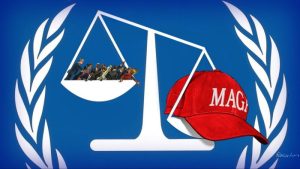Like it or not, miners are still a China proxy
Unlock the Editor’s Digest for free
Roula Khalaf, Editor of the FT, selects her favourite stories in this weekly newsletter.
Mining executives have talked for years about how an energy transition “supercycle” was about to reshape the industry — changing it from a bet on China’s rapacious demand for raw materials into something decidedly more global and strategic.
It hasn’t happened. The sector remains a China proxy. The last week has crystallised how closely tied the sector’s fortunes remain to the prospects of the world’s second-largest economy.
Shares in the “big four” diversified miners — BHP, Rio Tinto, Anglo American and Glencore — are up about 10 per cent in the past month after China announced efforts to boost its flagging economy including measures to support the property industry. Previously, they had tracked China’s downward trend.

Despite efforts to grow in copper, other battery metals and so-called “future facing” commodities, the global miners (with Glencore as the notable exception) still depend on the steelmaking commodity of iron ore. Meanwhile, even those future-facing commodities have seen underwhelming demand and softer pricing with the boom in electrification, electric vehicles and other sources of demand taking longer than expected to arrive.
That leaves the sector’s fortunes still wedded to iron ore prices, which have jumped about 20 per cent in Singapore over the past week. China is still the largest consumer of steel, despite a drop of around 30 per cent in demand from its stricken real estate sector compared to a peak in 2000.
The rally may not last. There were seasonal factors that already pointed to a rebound in iron ore prices in the fourth quarter. Traditionally this is when Chinese steelmakers begin stocking up to meet production needs around Lunar New Year. It is also when supply can be disrupted by weather conditions in Australia and Brazil, notes Citi analyst Ephrem Ravi.
Few expect the stimulus to alter the outlook for iron ore this decade. The property stimulus seemed largely designed to work through unsold stock. There was little to boost construction activity near-term, pointed out BMO’s Colin Hamilton.

With supply set to rise, from Rio Tinto’s Simandou in Guinea, miners are scrambling to cut costs. BHP has been focusing on lowering production costs: its free cash flow generation per tonne of iron ore is almost $8-10 higher than its nearest competitor, chief financial officer Vandita Pant said.
The sector’s real hope is that copper and battery metals will eventually take off. Better prospects for these commodities (and higher valuations for copper specialists) are driving dealmaking in the sector. But China is also the world’s largest copper buyer. Like it or not, miners will remain a China proxy for the foreseeable.
#miners #China #proxy




